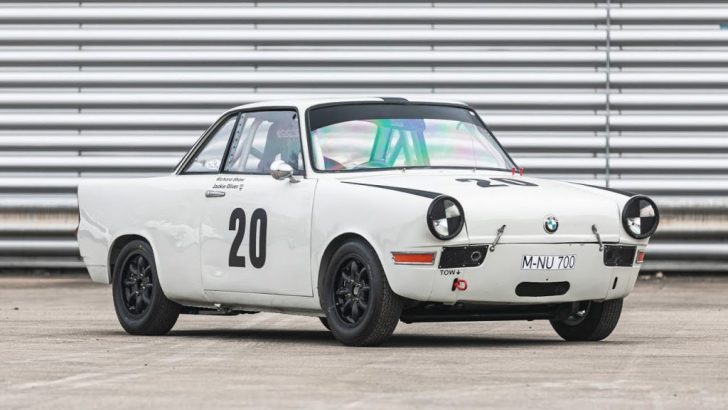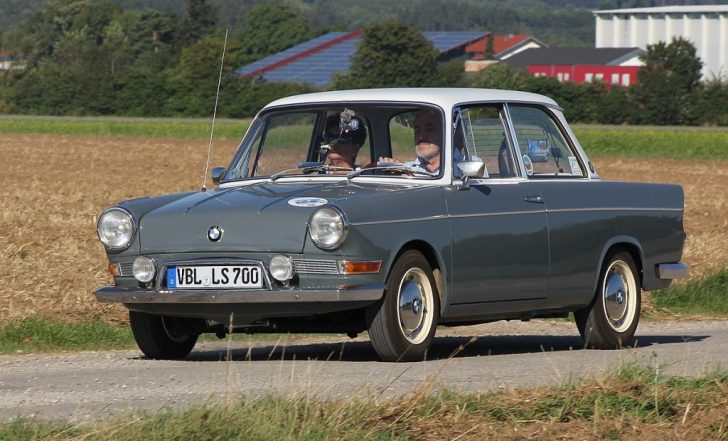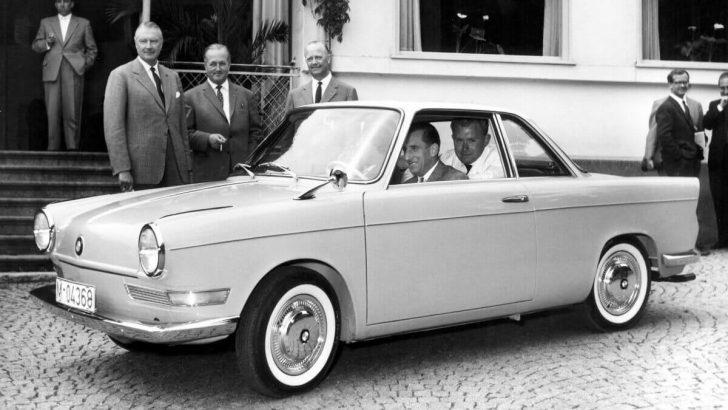The BMW 700 holds a special place in automotive history. This car, with its unique design and innovative monocoque body, marked a turning point for BMW. The story of the BMW 700 is fascinating, beginning with its predecessor, the BMW 600, and culminating in a vehicle that would help secure BMW's future.

YT / The BMW 700 was introduced in 1959, during a critical time for BMW. The company was struggling financially, and this new BMW played a crucial role in its revival.
So, it was designed by Giovanni Michelotti, a renowned Italian designer, who gave the car its distinctive look. The BMW 700 featured a sleek, modern appearance that stood out from its competitors.
What truly set the then-new BMW apart was its monocoque body, a first for BMW. This design meant that the body and chassis were integrated, providing increased rigidity and safety. The monocoque construction also made the car lighter and more efficient. This innovation was a significant departure from the traditional body-on-frame construction used in earlier models.
From BMW 600 to BMW 700, the Intriguing Backstory
Before the BMW 700, there was the BMW 600. The BMW 600 was an attempt to bridge the gap between microcars and more conventional vehicles. However, it did not achieve the success BMW had hoped for. The BMW 600 was based on the iconic BMW Isetta, with a longer wheelbase and an extra door for rear passengers. Despite these improvements, it was still seen as too small and underpowered for many consumers.

Car News / BMW needed a car that could appeal to a broader market and provide better performance while maintaining affordability. The BMW 700 achieved this balance perfectly.
Unique Design and Features That Set It Apart
The design of the BMW 700 was both functional and stylish. Its compact size made it perfect for urban driving, while the monocoque body offered improved handling and stability. The car was available in several body styles, including a coupe and a convertible, which added to its appeal.
Under the hood, this new BMW was powered by a 697 cc air-cooled flat-twin engine. This engine was derived from the BMW motorcycle engines, known for their reliability and efficiency. The BMW 700's engine produced 30 horsepower. Combined with its lightweight design, this provided respectable performance for its class.
The Signature Monocoque Body of the BMW 700
The monocoque body of the BMW 700 was a revolutionary feature at the time. This construction method involved creating a single shell that acted as both the body and the structural frame. This design offered several advantages, including reduced weight and increased rigidity. The monocoque body also contributed to better handling and improved safety in the event of a collision.

GTN / BMW's decision to use a monocoque body in the 700 model was a bold move that paid off.
It demonstrated BMW's commitment to innovation and quality. The success of the BMW 700 helped pave the way for future models that would also adopt monocoque construction.
The ionic car's legacy can be seen in the design and engineering principles that BMW continues to use today. Its combination of innovative design, practical features, and reliable performance set a new standard for small cars. You bet! The car's unique design still stands out after 60 years.

